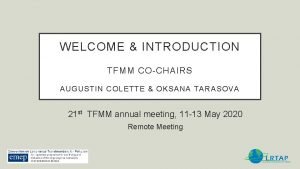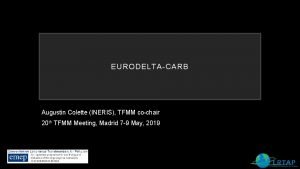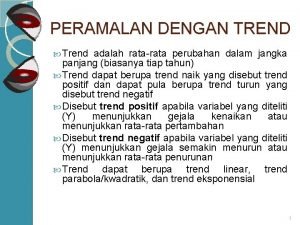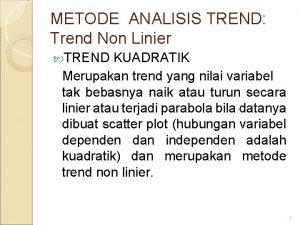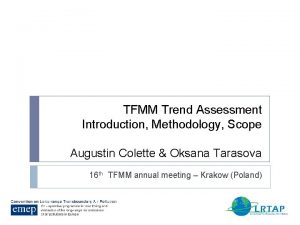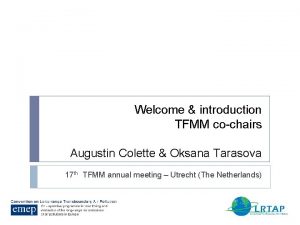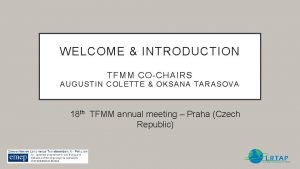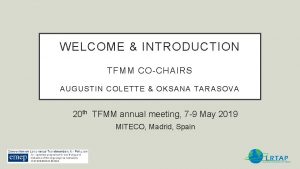TFMM Trend Assessment Introduction Methodology Scope Augustin Colette







- Slides: 7

TFMM Trend Assessment Introduction, Methodology, Scope Augustin Colette & Oksana Tarasova 16 th TFMM annual meeting – Krakow (Poland)

Introduction � Scope � Expectation: � policy effectiveness � Opportunity � 20 yr + of measurement � Model capacity � Outcomes � CLTRAP � Own & WGE Reports TFMM objectives: Coordinated trend analysis by the centres State Party feedback on selection of sites, methodology, results Eurodelta multi-model trend assessment

Methodology: observed trends � Process Brainstorm on methodology Paris 17/11/2014 Consensus on the methodology 20/3/2015 Centres to propose a robust set of stations 19/1/2015 Countries to provide feedback on this selection Centres to compute trends Countries to provide feedback on trend analysis 27/3/15 Mid April 2015 this meeting

Methodology: observed trends � Consensus methodology � Time periods: 1990 -2012 / 1990 -2001 / 2002 -2012 � Data completeness: 75% of annual coverage and 75% of years covered � Statistical analysis: Concentrations and wet deposition fluxes of Pb, Cd, Hg and B[a]P + other POPs bi-exponential on the basis of monthly values; Ozone, NO 2, PM 10, PM 2. 5, SO 2, sulphate, nitrate and carbonaceous atmospheric concentration and sulfur and nitrogen deposition (as concentration in precipitations) Mann-Kendall and Sen-Theil slope on the basis of annual values (based on daily means for all compounds, and on daily means + daily max 8 -hr for O 3). Trends by season (as DJF, MAM, JJA, SON) should be also computed, again on the basis of one value per year.

Methodology: modelling � EURODELTA-Trends � EMEP � 3 -yr: + 7 CTMs 1990/2000/2010 � 21 -yr trend

Bringing Model & Observations together � HM �A � O 3, & POPs: prerequisit given the scarcity of the network PM… � Model ability to capture trend � Quality of input emission � Issue of PM 10/PM 25 observations in the 1990 s

Report Outline � Synthetic report: 30 -40 pages � Details in annex or peer-reviewed papers � Structure Executive summary 4 pages, policy questions � Tools � � Observations � Models � Results � O 3 � PM � Precipitation chemistry � HM&POPs � Future Research Needs

